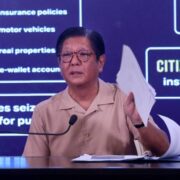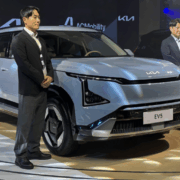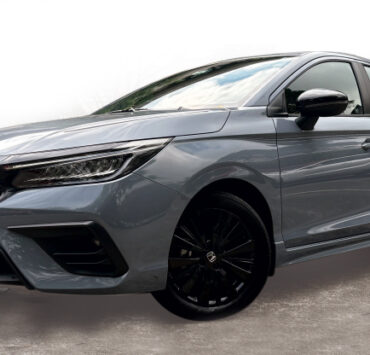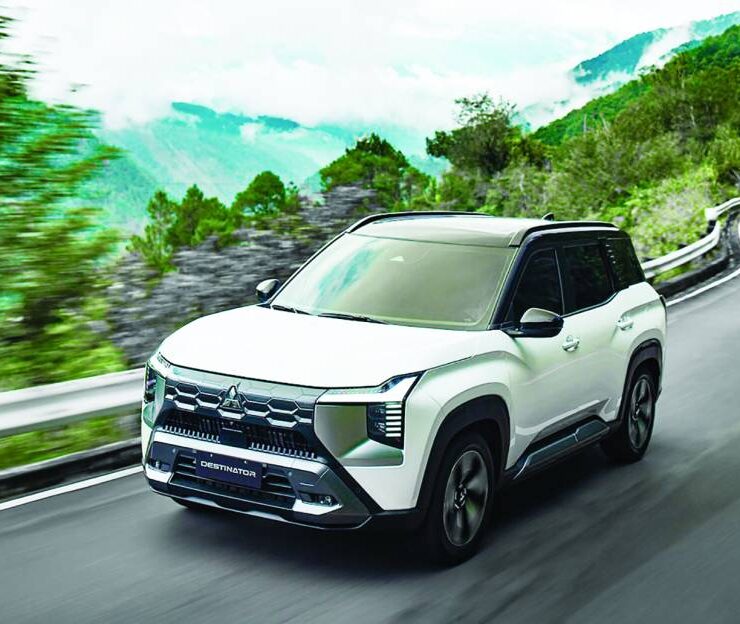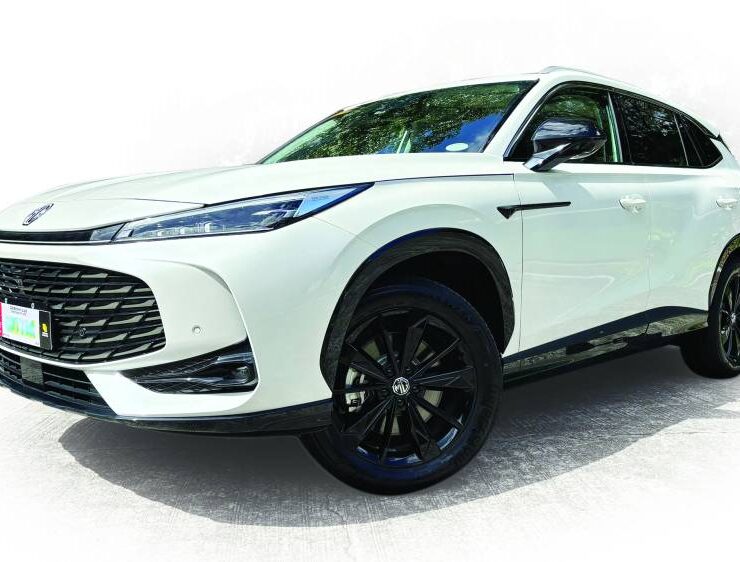RE: Stranger things

Cars, like everything else in this plane of existence, involve science and art. Lately, however, due to the changes happening in our environment (both natural and artificial), we’ve been made to deal more with the science of cars. Specifically, the science of making cars more sustainable and attuned to the natural environment.
Don’t blame the scientists for making us do the math. Mother Nature, herself, has sent wave after wave of warning shots—freak weather phenomena lashing out at all corners of the globe: droughts on one end, floods on another. Snow storms on one side, heat waves on another. It’s just that our scientists specializing in climate are able to quantify these things and present them to us as alarming patterns in charts and tables.
What have the majority of these climate scientists found, so far? Over the last decade, global carbon dioxide emissions—the greenhouse gas that drives planetary warming—have started showing signs of peaking. This potential peak represents a tug-of-war between the declining emissions in high income countries and the increasing emissions in middle- and low-income countries. The world could be reaching a point where the two income spectrums are beginning to equalize, as far as emissions are concerned.
Intergovernmental Panel on Climate Change (IPCC) lead author Glen Peters, who is also the research director at the Centre for International Climate Research in Oslo and a member of the executive team of the Global Carbon Budget, wrote that this tug-of-war is also happening amid the decline in use of fossil fuels and the rise of non-fossil fuel energy sources such as solar, wind, and electric power. The on-ground reality is more complex, as Peters said that different societies have different starting points and socioeconomic and political contexts.
So, it isn’t surprising that more and more carmakers dwell more on the science of their cars whenever they introduce new models or hold events with the public or the media. Specifically, they highlight how their vehicles manage the numbers needed to make their cars run as efficiently as possible.
I experienced such last Feb. 20 during Mazda Philippines’ media thanksgiving get-together at the posh Manila House in Bonifacio Global City. The Japanese carmaker’s guest of honor was First Philippine Holdings Corp. president Francis Giles Puno, a self-confessed car guy and a hardcore Miata fan who, interestingly, says he’s as passionate about net zero carbon emissions as he is about cars.
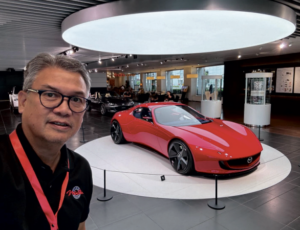
FPHC itself has been known to specialize in clean and renewable energy (RE). So, when Puno started speaking about his own passions as a “car guy” and as an “energy guy,” his fellow gear heads in the media paid close attention.
The quest for “net zero” isn’t new to Mazda, in fact. Globally, the brand has prioritized efforts to address issues related to the environment, endeavoring toward carbon neutrality by 2050 as it cites its sustainable development goals, which includes (but not limited to) affordable and clean energy, climate action, responsible consumption and production, and the like. Six years ago, Mazda Philippines inaugurated the 2.5-hectare Mazda Center of Excellence, its net-zero facility in Cabuyao, Laguna. The warehouse and training facility accommodates nearly a thousand units within the 12,269-sqm covered vehicle depot as a staging point before dealership delivery. The facility has a self-generating electricity source that harnesses up to 145,000 kWh annually from 270 solar panels. It also set up two large storage tanks with a pump system, and can harvest and store up to 135,000 liters of rainwater.
Mazda Philippines president and CEO Steven Tan has spearheaded, among others, partnering with non-profit organizations such as Katala Foundation for the endangered Philippine Pangolin and Mt. Pulag National Park to produce informative and educational video to help communities understand the fragility of the environment and the importance of its protection.
Puno talked about his fascination with cars, particularly with the Mazda brand. He said that he has been “proudly an active Miata Club member since 2000.”
He added, “I now own three Miatas: My original British Racing Green NA, my Machine Gray Metallic RF and my 30th Anniversary Orange RF MX5s. I have yet to part ways with my original and now ‘vintage’ Miata, which makes my 21-year-old son a very happy, self-proclaimed beneficiary of my reluctance to ‘break up’ with this car.”
On why the Mazda brand has resonated with him, he explained: “Cars have become unique spaces to feel exhilarated. To unwind. To enjoy. To contemplate. Put simply: Beyond being my daily means of transport, I have found cars to be a true source of joy, and this is why I can really relate with Mazda’s human- centric joy of driving philosophy.”
A shared vision of a sustainable future is what may have propelled Mazda’s and FPHC’s paths to finally intersect. “The car and power industries are major sources of carbon emissions, but we now see that both are now also undergoing significant transformational shifts towards cleaner and greener alternatives,” Puno observed.
He added, “The parallelisms (between Mazda and FPHC) are actually quite interesting. We recognize that there is an urgency to get to a net zero carbon emission world by 2050 to avoid irreversible catastrophe, and both Mazda and FPHC have pivotal, important roles to play.
“I find Mazda’s 2030 vision to be astounding in its clarity and simplicity: ‘To be a car-loving company that creates moving experiences through the joy of driving’. But there is a deeper meaning that can be found in Mazda’s mission and guideposts: Contribute to a future sustainable Earth by providing multi-solutions to mitigate climate change; contribute to a society where everyone feels safe to move freely by providing technology that proactively enhances our well-being; and contribute to each person’s joy of living by delivering moving and emotional experiences. This joy of driving philosophy goes beyond the actual product, and into the very heart of Mazda’s reason for being.
“On the other hand, in 2020, the FPHC Group recrafted its mission statement: ’To forge collaborative pathways to a decarbonized and regenerative future’. This mission reflects the Group’s response to the growing urgency of the climate crisis where sustainability is no longer enough. At FPHC, we believe that it is only by decarbonizing our business operations and regenerating our ecological systems are we able to ensure that future generations can still inherit a livable planet. In other words, when everyone is given the opportunity to thrive on a healthy planet, only then will it truly be good enough.”
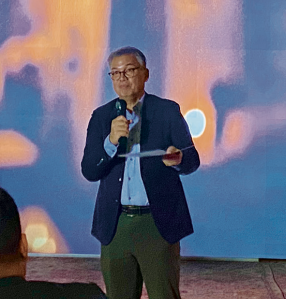
Multiple solutions
Puno continued his talk as he shared his first-hand experience attending the Tokyo International Forum on Sustainable Brands in 2024. “Mazda President Masahiro Moro was the keynote speaker. He spoke of how Mazda remained faithful to its joy of driving philosophy, while taking a unique approach to achieving sustainability. He started by asking: ‘How practical is it to convert all cars to EVs if each country has different mobility environments, lifestyles, infrastructure, alongside a host of other factors?’
“Faced with this complexity, Mazda worked towards ‘providing multiple solutions—from clean diesel engines to hybrids, plug-in hybrids, and electric vehicles—that can provide choices across different markets’. For Mazda, this is the most rational and practical path to broadening and accelerating CO2 reduction worldwide.”
The Mazda Iconic SP
Puno didn’t hide his excitement about Mazda’s new NEV compact sports car concept. “As if to prove a point that being exciting and responsible are not mutually exclusive, Mazda recently unveiled the ‘compact sports car concept of the future’, the Mazda Iconic SP. With its dual-rotor rotary engine EV system, which can run on a variety of fuels including hydrogen and biofuel. When the onboard battery is charged using electricity from renewable sources, the system can run virtually carbon neutral. I was lucky enough to have the chance to see this car in person in the Mazda Hiroshima HQ last year, and if this is what the future of mobility looks like, well, then, the future has never looked so good.”
He also shared his enthusiasm over FPH’s own future initiatives, likening the company’s passion to that of Mazda’s. “We currently have the strongest, zero-coal energy portfolio in the country. We offer power from low-carbon, clean natural gas, and from RE sources such as geothermal, hydro, wind and solar. We are the largest RE producer in the country today, providing 34 percent of our country’s RE needs, and with our natural gas and LNG platforms, we are in the best position to lead the energy transition while addressing energy security concerns.”







